Kaldheim has a lot going on—two new and four major returning mechanics. Today, let’s go over what’s new, what’s new with the old, and how complex things might become when everything comes together.
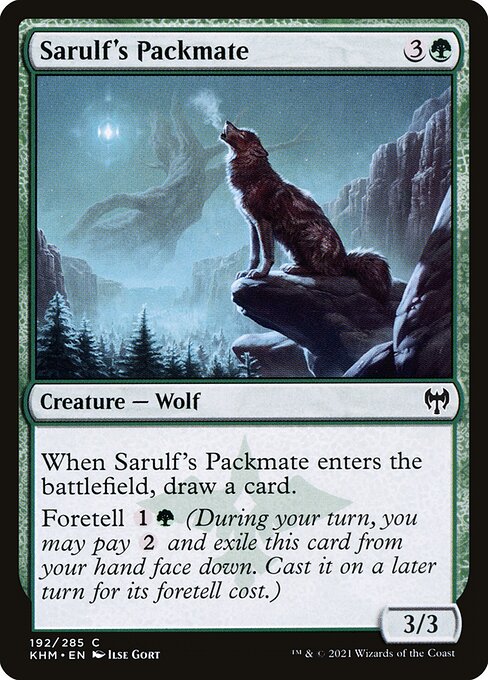
Foretell
Foretell is a twist on Morph, with a bit of Suspend sprinkled in. It’s a card-smoothing mechanic, which distributes a card’s cost over time. It loses most of Morph’s guessing game—”is it a Skirk Marauder I have to block or a Battering Craghorn I’ll be wrecked if I block?” There still is some guessing game—Behold the Multiverse will punish people trying who play around Saw It Coming in Standard—but I expect it to be more of a smoothing mechanic like Kicker than a high complexity, set-defining mechanic like Morph. Then again, the existence of high ceiling combat tricks like Kaya’s Onslaught will make people sweat combat in Limited.
Foretell introduces an interesting User Interface issue for Arena: how should it work with revealed cards? If you reveal cards and add them to your hand, say by hitting with Alrund, God of the Cosmos, they are revealed in Arena’s interface. They remain revealed until they leave your hand or something introduces uncertainty to your hand—such as Riverwise Augur—at which point, they are hidden once again. If you Foretell a card, the Arena UI should hide all revealed Foretell cards in your hand (since you could have Foretold any one of them) but keep revealed all other cards (since you could not have Foretold them). I don’t know whether Arena’s UI previously supported selective re-hiding—it would eventually have to introduce it when Khans of Tarkir Remastered introduces Morph.
The UI logic wants to be more complicated than this—if your hand only contains one card and it’s a revealed Foretell card, Arena probably should keep it revealed while it’s Foretold. That raises questions of how best to present a known-but-technically-hidden Foretold card without suggesting that the card is on the battlefield. Arena also has to communicate the order in which cards are Foretold, just as Magic Online does for Morph. These might seem like minor considerations, but mechanics nowadays need to be streamlined for both digital and tabletop implementation.

MDFCs
Modal Double-Faced Cards return in Kaldheim and will appear again with Strixhaven in the spring. Whereas in Zendikar Rising, MDFCs exclusively had lands on their back sides; Kaldheim MDFCs span all permanent types, with artifact, enchantment, creature, and even Planeswalker represented. We’ve already discussed the complexity challenges of MDFCs without unified, simple back sides. Kaldheim seems to have addressed that problem by bumping them all up to rare or mythic and using far fewer of them—they are only on gods and the four Pathways. This alleviates their complexity by rendering them occasional guests in Limited (as in Magic Origins and Core Set 2019) rather than omnipresent components (as in Zendikar Rising and every Innistrad set). It also brings down overall complexity, since there are a lot of mechanics in Kaldheim.
Kaldheim’s approach to MDFCs does raise the question of how they’ll be implemented in Strixhaven. Zendikar Rising exclusively using them on lands suggested a progression such as “All lands in the first set, artifacts in Kaldheim (including artifact creatures), and enchantments in Strixhaven (including enchantment creatures).” Perhaps there is no such pattern and Strixhaven will similarly employ a potpourri of back sides. Or perhaps Strixhaven will exclusively use instants and sorceries on back sides, though that would create a new restriction on the front sides—MDFCs have to have a permanent on at least one side, otherwise they are functionally identical to split cards (something Wizards explicitly stated they are avoiding). Given that Strixhaven was initially pitched around MDFCs and Zendikar Rising easily incorporated them with lands, perhaps Kaldheim is the odd set out in using them sparingly.

Boast
All games must end, and most aim to end before they’ve worn out their welcome and players quite in frustration. To this end, Magic often introduces aggressive mechanics that reward players for trying to end the game.
Boast joins a long line of aggressive mechanics (that are almost always in red), but with a new twist. Some mechanics, like Battalion or Mentor, require some setup. Others, like Raid, require little assistance. Boast takes a Dash of Spellshaper and adds a resonant moment, where your creatures brag all about this one spell they know. The design is super smart—you only need to attack and spend some mana, so there’s no being blown out by interaction. The timing is incredibly flexible, so there’s no punishment for waiting until after blocks or combat (and there are no triggers to worry about). You’re limited to a single casting, otherwise Boast would probably cost twice as much. Boast seems like an interesting workhorse mechanic, but time will tell if it’s worth telling the whole tavern about.
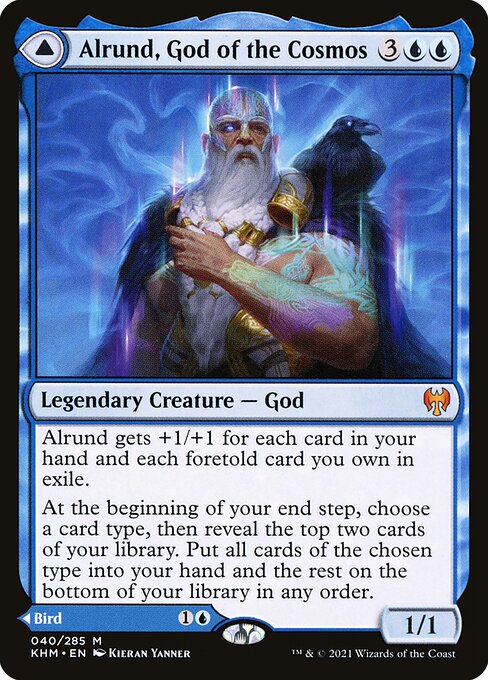
Gods
Unsurprisingly, gods return in Kaldheim. This marks the third slate of Magic gods and locks in the pattern of what qualities define godhood. Theros gods all had the following properties:
- They are legendary enchantment creatures.
- They are indestructible.
- They aren’t always creatures; Devotion turns them into creatures.
- They have an ability which functions when they aren’t creatures (monocolor gods have two).
- They are part of a tight color cycle.
The gods of Amonkhet were the second data point, creating the first patterns(common traits are underlined):
- They are legendary creatures.
- They are indestructible.
- They aren’t always creatures.
- They have an ability which functions when they aren’t creatures.
- They are part of a tight cycle.
While there are clear differences between Theros and Amonkhet gods, they had more in common than apart. After them, we met two cycles of Bolas-corrupted in Hour of Devastation and War of the Spark. Though clearly designed to feel different from mythology-inspired gods, they nevertheless much in common:
- They are legendary creatures.
- They revive when killed.
- They have two abilities.
- They are part of a tight cycle.
We haven’t yet seen all of the Kaldheim gods, but they seem to veer farther away. Some have keyword abilities, others do not. All are MDFCs, but they sport a variety of card types on their back sides. They are the first gods to have no resistance to death—that makes sense considering Norse mythology—but does make them lose an ability common to all prior gods. Their willingness to jump into battle also feels appropriate, but it sheds another previous trait of godhood. As for now:
- They are legendary creatures.
- They are MDFCs (with no consistency in card types on their back sides).
- They aren’t always creatures.
- They have at least two abilities.
- There are part of a cycle.
With three points of data, the rules for gods (excluding Bolas-corrupted gods) seem to be:
- They are legendary creatures.
- You can’t always have everything on their front face.
- They have at least one ability.
- They come in cycles, though they can be loose.
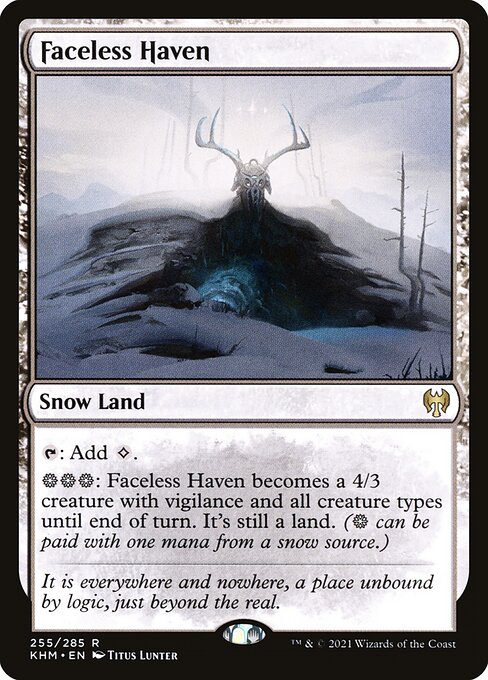
Snow
After a long hiatus, snow returned in a big way with Modern Horizons. Now, it returns to Standard. It seems there’ll be more Snow Metalcraft as introduced byIce-Fang Coatl. Snow isn’t the easiest mechanic to balance for Limited—it’s facile to enable in Constructed when you can build an all-snow mana base, but a challenge when you need to draft snow basics. That said, it was super fun to build around in Modern Horizons and I expect to enjoy similar draft patterns in Kaldheim. The only big innovations seen thus far are the first fetchable dual lands (which seems an absolutely brilliant way to introduce budget dual lands) and the new snow frame—I wonder how different Frost Bite and Tormenter’s Helm‘s frames will look side by side, but that’s a worry for nonexistence tabletop prerelease events.
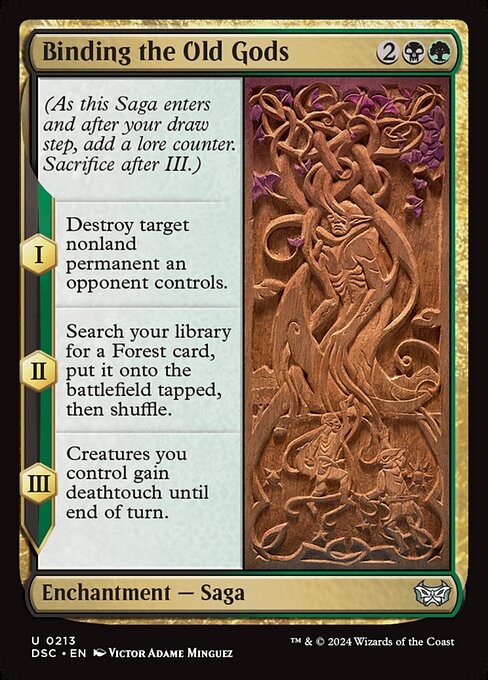
Sagas
One of the more beloved new mechanics, Sagas triumphantly return in Kaldheim. The obvious innovation is that they’re the first multicolor sagas. However, there’s also a subtle change here. Both Dominaria and Theros Beyond Death referenced events from previous sets (though THB leaned heavily on Greek mythology tropes). Kaldheim’s sagas are the first to have no prior history to draw upon. Obviously, they draw inspiration from Norse mythology, but they’re the first to write completely new history. This isn’t a major innovation, but it’s a step towards sagas becoming deciduous, able to be used in any set.
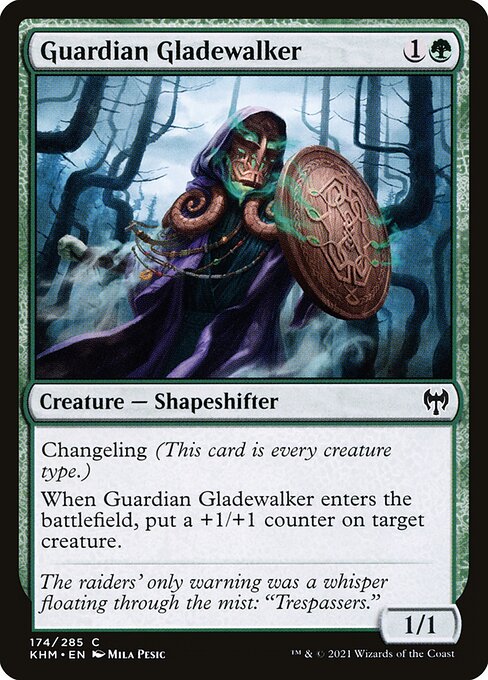
Changeling
Finally, there’s changeling, the mechanic Ixalan needed. By itself, it does nothing, but it allows players to hedge their bets in draft, play multi-tribe decks, or benefit incidentally from tribal bonuses without committing to them. Visually, these changelings are a cool, mysterious twists from Lorwyn’s cute, goofy jello creatures.
Changeling is a simple mechanic, but it adds a bit of complexity. You can’t just scan creature’s type lines to check for tribal interactions—you have to internalize that shapeshifter signifies a wildcard. That’s not a problem in and of itself, but factor in keeping track of how many snow permanents each player has, how many snow mana each player has, how many cards are Foretold (and what your opponents’ could be), what Boast abilities are available mid-combat, and the minor mental load of tracking (and anticipating) sagas, that adds up to a varied (and likely large) cognitive load. Factor in mini-mechanics like RW attachment-matters, treasure tokens, and vehicles and that’s plenty to juggle.
Ikoria tested the waters with higher complexity, but did so with Mutate and Companion taking most of the complexity points. Kaldheim spreads the complexity over many more mechanics. Magic being digital-only right now will reduce the need to track everything, but one wonders how players will feel once they’re playing with paper cards once more (and having to remember their Foretell costs). Time will tell.
That’s where we’ll finish for today. There’s a lot going on in Kaldheim and plenty to look forward to for prerelease. There’s also Tibalt’s Trickery, one of the strangest Magic designs I’ve ever seen, but that’s a story for another day.
And, as always, thanks for reading.
Zachary Barash is a New York City-based game designer and the commissioner of Team Draft League. He designs for Kingdom Death: Monster, has a Game Design MFA from the NYU Game Center, and does freelance game design. When the stars align, he streams Magic (but the stars align way less often than he’d like).

